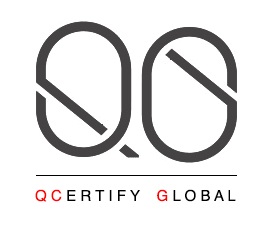Cybersecurity Governance: How GRC Protects Your Business from Cyber Threats
In an era where cyber threats are escalating at an alarming rate, businesses must implement robust security frameworks to safeguard their data and operations. Governance, Risk, and Compliance (GRC) plays a crucial role in strengthening cybersecurity governance by providing a structured approach to managing risks, ensuring compliance, and establishing effective security policies.
In this blog, we will explore how GRC enhances cybersecurity governance and protects organizations from evolving cyber threats.
Understanding Cybersecurity Governance
Cybersecurity governance is a set of policies, procedures, and controls that guide an organization’s approach to managing security risks. It ensures that security measures align with business objectives, regulatory requirements, and industry best practices.
Key aspects of cybersecurity governance include:
- Establishing security policies and guidelines
- Defining roles and responsibilities for security management
- Monitoring compliance with security frameworks
- Implementing risk management strategies
- Continuous improvement through audits and assessments
GRC frameworks provide the foundation for cybersecurity governance by integrating these aspects into a unified risk management strategy.
How GRC Enhances Cybersecurity Governance
1. Strengthening Risk Management
GRC frameworks help businesses identify, assess, and mitigate cybersecurity risks before they escalate into major threats. By implementing a structured risk management approach, organizations can proactively address vulnerabilities and enhance their security posture.
How GRC helps:
- Conducts regular risk assessments to identify security gaps
- Prioritizes risks based on their impact and likelihood
- Implements mitigation strategies to reduce potential threats
2. Ensuring Regulatory Compliance
Businesses must comply with various cybersecurity regulations and standards such as ISO 27001, GDPR, PCI DSS, and NIST. Failure to meet these requirements can result in legal consequences and financial penalties.
How GRC helps:
Maps compliance requirements to organizational policies
Automates compliance monitoring and reporting
Reduces the risk of non-compliance penalties
3. Establishing Security Policies and Controls
GRC frameworks ensure that cybersecurity policies are well-defined, documented, and implemented consistently across the organization.
How GRC helps:
Develops security policies aligned with business objectives
Defines access controls, encryption standards, and incident response procedures
Ensures that employees follow security best practices
4. Enhancing Incident Response and Business Continuity
Cyber incidents such as data breaches, ransomware attacks, and insider threats can disrupt business operations. A well-structured GRC strategy includes a robust incident response and business continuity plan to minimize damage.
How GRC helps:
Develops a structured incident response plan
Implements disaster recovery and backup strategies
Conducts regular security drills and simulations
5. Improving Security Awareness and Training
Human error is a leading cause of cybersecurity breaches. GRC frameworks incorporate security awareness training programs to educate employees on best practices and potential threats.
How GRC helps:
- Conducts regular cybersecurity awareness training
- Implements phishing simulations and social engineering tests
- Establishes a culture of security within the organization
The Role of ISO 27001 and Other Security Frameworks in GRC
ISO 27001, the international standard for Information Security Management Systems (ISMS), plays a vital role in cybersecurity governance. It provides a structured approach to managing security risks and ensuring continuous improvement.
Other essential security frameworks integrated into GRC strategies include:
- PCI DSS – Protects payment card data
- NIST Cybersecurity Framework – Provides a structured approach to managing cybersecurity risks
- SOC 2 – Ensures data security in cloud-based services
- GDPR & HIPAA – Regulatory compliance for data privacy and healthcare security
Conclusion
Cybersecurity governance is a critical component of modern business operations. By implementing a robust GRC strategy, organizations can proactively manage cyber risks, ensure regulatory compliance, and enhance their overall security posture.
At QCertify Global, we help businesses strengthen their cybersecurity governance through expert consultation and certification services for ISO 27001, PCI DSS, and other GRC frameworks. Contact us today to secure your business against evolving cyber threats!




